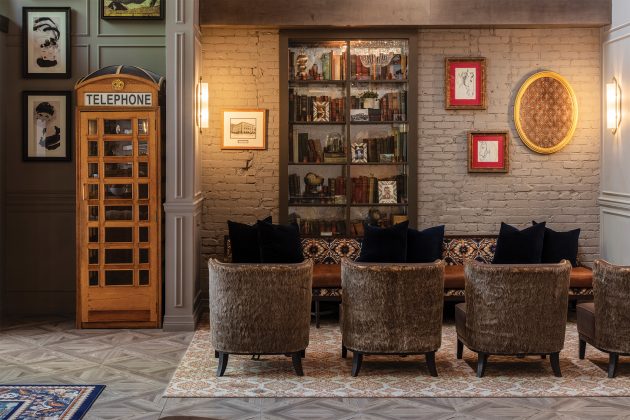Arriving in Glenwood Springs—whether you’re weaving along I-70 or gliding in aboard the Rocky Mountaineer luxury train—is an experience that never fails to inspire awe. The alternating fault lines of sandstone and limestone tower overhead as the Colorado River courses below, dotted with kayakers and rafters turning its rapids into their playground. Tucked between the sheer canyon walls is a town that punches well above its weight: think geothermal hot springs (it is the town’s namesake, after all), storied caverns, a charming downtown, and a growing roster of thoughtfully renovated resorts.
One such revival is that of the historic Hotel Denver, a cornerstone of Glenwood Springs since the early 1900s. In a two-phase renovation, the iconic property has been transformed and reborn as Hotel Maxwell Anderson. Its unveiling introduced updated rooms and seventeen new ones, as well as renovated public spaces with community-focused, history-forward details like a central fireplace and new displays for beloved antiquities.
Wild Muse Interiors, the Denver-based design team on the project, infused the hotel with a sophisticated color palette and luxurious textiles, seamlessly blending the past with the present. A grand piano dating back to 1885 (transported to Glenwood by boat and mule), the hotel’s original cash register, and books printed in the 1820s are just a few of the storied objects that help tell the hotel’s story.
The rebranding was also an intentional move to reduce confusion and reassert the hotel’s ties to Glenwood’s past.“The name has proven confusing for people who regularly mistake it for the nearby Hotel Colorado or aren’t sure if the property is in Denver instead of Glenwood Springs,” says Tony Sherman, owner of Terrapin Investments, the firm responsible for the hotel’s new life. Moreover, the new name, in addition to being a family name for the owners, honors a railroad conductor who rode the rails when Glenwood Springs was still a budding mountain outpost. It’s a fitting tribute to a place where the romance of the rails remains very much alive—and where the past is polished for the present.



















